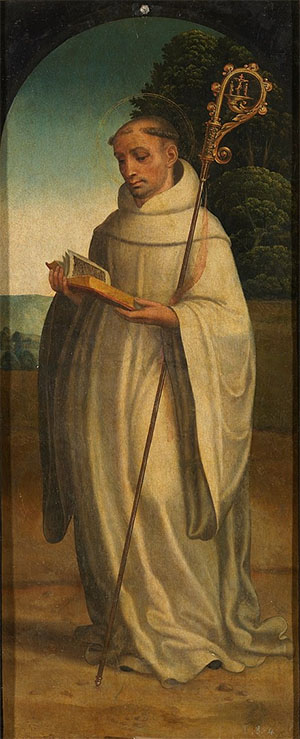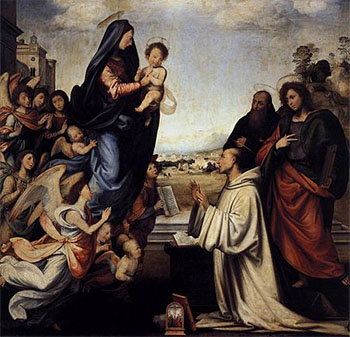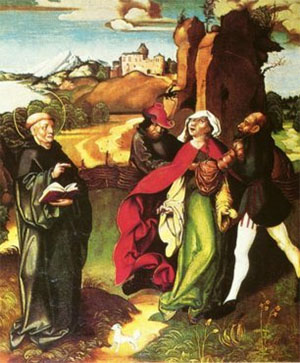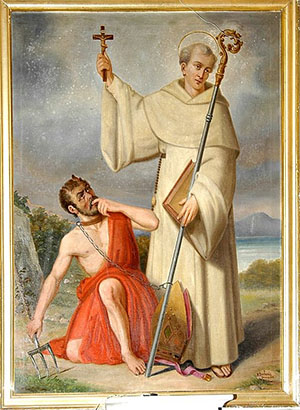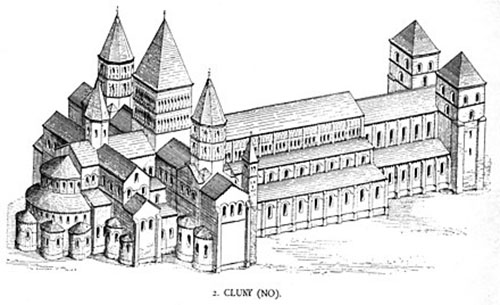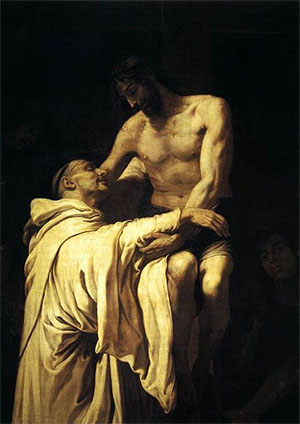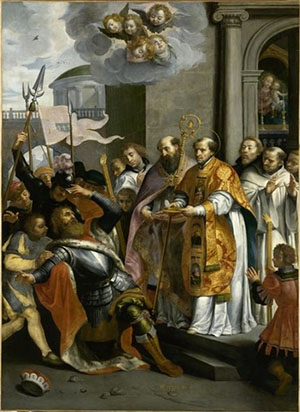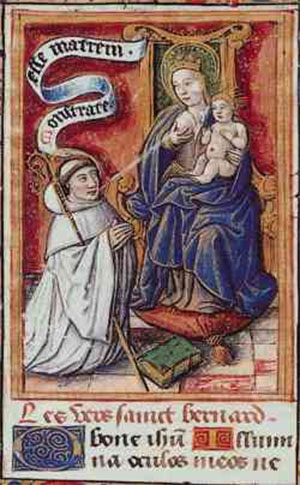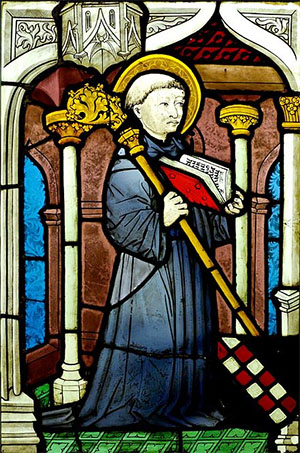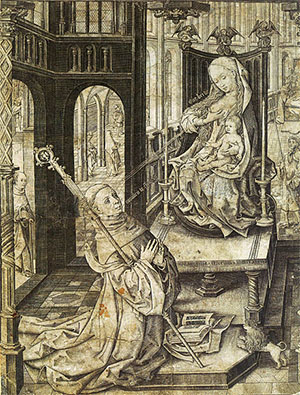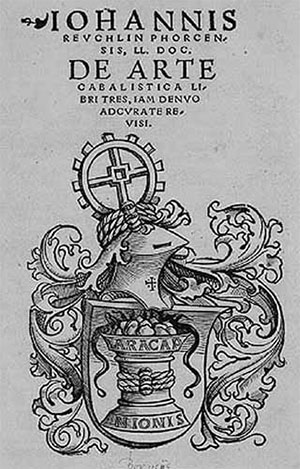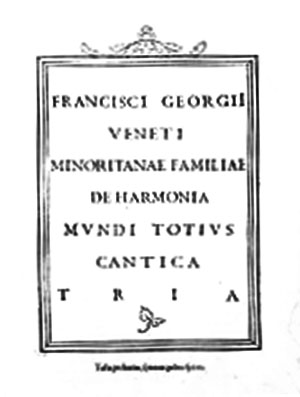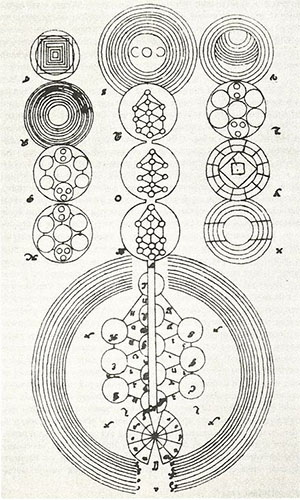CHAP. IV. Methods proposed for the melioration and abolition of Slavery in India — answers to objections to its abolition arising from the supposed kind treatment of slaves — the preservation of children and adults in famine by selling themselves for support — the indifference of the slaves to emancipation, — decreasing the population of an Island or District — Mahomedan prejudices prohibiting any others than slaves attending on their women, and that they cannot dispense with slaves, — and the interest of the slave owners and the Government — concluding remarks, from Book V: Slavery, Excerpt from "India’s Cries to British Humanity, Relative to Infanticide, British Connection with Idolatry, Ghaut Murders, Suttee, Slavery, and Colonization in India; to Which are Added, Humane Hints for the Melioration of the State of Society in British India"
by James Peggs
1832
p. 360-386
-- India’s Cries to British Humanity, Relative to Infanticide, British Connection with Idolatry, Ghaut Murders, Suttee, Slavery, and Colonization in India; to Which are Added, Humane Hints for the Melioration of the State of Society in British India, by James Peggs
-- Slavery in India: The Present State of East India Slavery; Chiefly Extracted From the Parliamentary Papers on the Subject, Printed March, 1828, August 1832, August 1838, by James Peggs, Third Edition, 1840
-- Slavery and the Slave Trade in British India; With Notices of the Existence of These Evils in the Islands of Ceylon, Malacca, and Penang, Drawn from Official Documents, by Thomas Ward and Col, And to Be Had At the Office of the British and Foreign Anti-Slavery Society, 1841
-- Slavery in the Bengal Presidency Under East India Company Rule, 1772-1843, by Amal Kumar Cattopadhyay, Thesis presented at the University of London for the Degree of Doctor of Philosophy, 1963
-- The Asiatic Journal and Monthly Register, Volume 21, January to June, 1826
-- The Asiatic Journal and Monthly Register, Volume 22, July to December, 1826
p. 360-386
BOOK V. SLAVERY
CHAP. IV. Methods proposed for the melioration and abolition of Slavery in India — answers to objections to its abolition arising from the supposed kind treatment of slaves — the preservation of children and adults in famine by selling themselves for support — the indifference of the slaves to emancipation, — decreasing the population of an Island or District — Mahomedan prejudices prohibiting any others than slaves attending on their women, and that they cannot dispense with slaves, — and the interest of the slave owners and the Government — concluding remarks.
It is interesting to trace the various steps proposed or adopted for the melioration and abolition of slavery in India. The Madras Board of Revenue, in 1819, thus close their interesting letter, from which copious extracts have been given:—
"The Board are decidedly of opinion that slaves should not be sold for arrears of revenue; and prohibitory orders to this effect will be issued to Malabar, where alone it has occurred. In Malabar and Canara, alone, the number of slaves is calculated at 180,000; and the Board have now under consideration certain propositions from Mr. Graeme, the Commissioner in Malabar, for the melioration of their condition, and the gradual emancipation of slaves in that country. In the Tamil provinces the number of slaves is comparatively few; their condition is better, and any immediate emancipation of them would be attended by inconvenience, difficulty, and perhaps distress. This might, therefore, be at present deferred, until the practical remedy for the gradual abolition of slavery on the other coast shall have been fully considered and decided on. But, whatever may be the future decision respecting those who are already slaves, the Board think that a Regulation ought to be published, to prevent the further extension of slavery, and to meliorate, in some degree, by a few general enactments, the condition of those who are already slaves. The further purchase of free persons, as slaves, should be declared invalid and illegal; and all children hereafter born slaves should be declared free. But any person should be at liberty to contract, for a given sum, to labour for a term of years, or for life. Such contracts, however, should be in writing, and only binding upon the individual who executes it, not upon his wife or children.
"Slaves should be declared competent to possess and dispose of their own property, to the exclusion of any interference therewith on the part of their master. The Board further submit, whether it would not be proper to annex some penalty to the purchase of female children, for the purpose of being brought up as prostitutes. It might also be provided that the proprietors are to provide wholesome food and clothing for their slaves; that in sickness, age, or infirmity, they shall not neglect them; that they shall not have the power of corporeal punishment; that slaves, on being ill-treated by their masters, shall be allowed to claim the privilege of being sold to another; and that in breach of these laws, or refusal to comply with them, on the part of the master, the slave shall receive his liberty. It might further be provided, that slaves shall have the power to purchase their liberty at the price for which it was forfeited; and that slaves attached to lands or estates, which may escheat to Government, shall be liberated. Many of these provisions will be found to contravene those of the Hindoo law, which, with respect to Hindoos, is declared by the regulations to be in force; and the necessity, therefore, of a formal enactment of them in the code will be sufficiently apparent.
"The Collector in Trichinopoly has submitted a proposition for meliorating the condition of the pullers in the district, by adding two per cent, to their warum, which is at present only ten per cent. By this, he observes, 'the situation of the pullers would be greatly benefited, and the expense to Government would be not more than 2,000 pagodas per annum. This sum would materially tend to the comfort of 10,000 people, by whose industry the country is cultivated, and who, in point of fact, are the creators of revenue.' The Board are not aware of any objection to this measure, and it is accordingly resolved to recommend the adoption of it to Government. The Collector will report the result of it, and the effects it may have on the condition of the people. Resolved, also, That the Collectors in the other Tamil Districts be desired to report whether a similar measure could not be adopted with advantage in their Districts; and, if so, the extent of remission proposed. The Board would remark that the subject discussed, appears to them of great importance; that the suggestions which they have submitted should be well weighed before they are adopted; and that any legislative enactment, that may be deemed requisite, be framed with great caution. It may also be for the consideration of Government, whether the subject may not, as a general one, be referred, in the first instance to the Supreme Government, in order to ascertain the state of slavery in the Bengal territories, and whether any restrictions are imposed on it there."* [Par. Papers on Slavery in India, p. 900.]
The propriety of improving the condition of slaves in India, has been urged by different functionaries of the British Government. Mr. Graeme, in his Report on Malabar in 1822, made the following judicious remarks: —
"Upon occasion of the condition of the slaves of Malabar being brought into notice, it was lately suggested that slavery should be subjected to the rule of the Mahomedan law. This, if carried completely into effect, would indeed mitigate the severity of slavery, and render slaves in Malabar a very different race of mortals; but, strictly speaking, slavery is not permitted by the Mahomedan law to be practised by any but Mussulmans, and even by them, only as regards the inhabitants of countries not agreeing to become converts to Mahomedanism, and at the same time refusing to pay the tax imposed by Mahomed upon infidels, or to permit the free exercise of the Mahomedan religion. Slaves made so by stealth, and not in open war, or an authorized occasion, are not recognised by the Koran; and the acquisition of slaves by purchase, as practised by the Moplar Mahomedans in Malabar, is equally irreconcilable to the Mahomedan law. Ill-treatment of slaves is, with them, punishable by the slave being emancipated, or being sold to another master, on conviction before the quazee.
"Though it may be allowed that slavery in Malabar is not intolerable, and not exercised to an excessive degree of active cruelty, the diminutive and squalid appearance, and the wretched hovels of a race of beings in the province, who, by a census taken of the population in Fusly 1216 (A. D. 1809) were reckoned to amount to 94,786, sufficiently indicate, that they do not enjoy that comfortable state of existence which every person should have it in his power to acquire by his labour. There are no doubt many free men in the different ranks of society who are equally indigent with the slave. The slave is scarcely ever exposed to the extremity of actual starvation; and it has been stated by respectable public authority, and I understand with correctness, that a beggar of this cast is seldom or never found. But among free men there are many, who are too proud, idle, and dishonest to work, and they have recourse to charity and fraudulent means to gain their subsistence; but it matters not, that many worthless characters are in worse circumstances, the question is, — whether slaves are as comfortable as they ought to be, and whether they acquire as much by their own industry in servitude, as they would in a free state."* [Par. Papers on Slavery in India, p. 922.]
The Bengal consultations as early as 1774, in a letter to the Council of Dacca, contain the following judicious and humane observations, respecting the annihilation of slavery; —
"In those districts where slavery is in general usage, or any way connected with, or is likely to have any influence on the cultivation or revenue, which we are informed is the case at Sylhet, and may be so in the other (especially the frontier) parts of your division, we must desire you particularly to advise us what is the usage and every circumstance connected with it, and we shall then give such directions as we may judge to be necessary; but considering your reference, in the meantime, in the light of a general proposition, we are of opinion, that the right of masters to the children of the slaves, already their property, cannot legally be taken from them in the FIRST GENERATION, but we think that this right cannot and ought not to extend further, and direct that you do make publication accordingly." [p. 4.]
It is to be deeply regretted that this excellent suggestion does not appear to have been acted upon. The second judge of the Bareilly Court of Circuit, in 1817, W. Leycester, Esq., proposed the same rational and effective method of gradually annihilating slavery.
"Many estates in the country are cultivated by indigenous slaves, but it is very desirable, it should no longer be possible to transfer the African slave trade from the West to the East Indies, with only one proviso against it, that the slaves may not be resold; and it is also most desirable, that the present importation of females, for the purpose of breeding an hereditary race of slaves, should be put a stop to. Nothing, perhaps, is so recoiling as the idea of hereditary slavery — of a man's inheriting, at his birth, nothing but the misfortunes of his parents, without hopes of emancipation, without the possibility of rising in life, through exertion or talent, and liable every moment to be taken to the market and sold, and transferred to the possession of another. I can hardly conceive that there could be any objection to modifying the present system of slavery, by an act declaring the children of slaves to be free; that, if men will have slaves, they should also have to pay for them, and not to rear and inherit them like the produce, of a farm yard."* [Par. Papers on Slavery in India, p. 345.]
The reply of the Court of Nizamut Adawlut to this humane judge was as follows; —
"The Court will only add, at present, that they participate in the sentiments expressed by Mr. Leycester, in abhorrence of hereditary slavery, and earnestly wish it could be discontinued, with regard to all children born under the British protection; but whilst it is allowed to remain, with respect to the progeny of existing slaves, born under the British Government in the West Indies and South Africa, the abolition of it, on general principles of justice and humanity, could not, the Court apprehend, be consistently proposed for India, where it has, from time immemorial, been sanctioned by the laws and usages of the country, and where the state of slavery is not so injurious to the objects of it, as in other countries where it is still maintained."† [p. 346.]
The measures proposed by Sir Stamford Raffles, Governor of Java, in 1812, for the melioration of slavery in that island, were cordially approved by the Governor General, Lord Minto, and his Council. For an account of them, see Par. Papers, pp. 155-161.‡ [Relative to the melioration of slavery in Prince of Wales Island, see p. 453.]
The Madras Board of Revenue in 1818, express their conviction of the necessity and propriety of improving the civil condition of the slave. —
"The right which the slaves in the Tamil country possess to continue attached to the soil where they are born, which, though not universal, is pretty general among them; their dependence rather on a community than on an individual; and perhaps the vicinity of some of them to the Presidency, where a general knowledge prevails that the spirit of our government is inimical to bondage, seem all, more or less, to have contributed to render their condition in some degree superior to that of their brethren on the other coast. It is by no means, however, to be understood that this is universally the case. Their treatment necessarily depends principally on the individual character of their owners; and when we reflect on those evils that are inseparable from even the mildest state of slavery, and consider how large a portion of our most industrious subjects are at present totally deprived of a free market for their labour, restricted by inheritance to a mere subsistence, and sold and transferred with the land which they till, — policy, no less than humanity would appear to dictate the propriety of gradually relieving them from those restrictions, which have reduced them, and must continue to confine them, to a condition scarcely superior to that of the cattle which they follow at the plough!
"While such ought to be the policy pursued, with regard to this class of people, it would be obviously unjust to interfere with the private property, which there can be no doubt the ryots at present possess in their slaves; and it might be dangerous too suddenly to disturb the long established relations in society subsisting between these two orders. For the present, it would seem sufficient, with the view to prevent oppression or abuse of authority, to define, by legislative enactments, the power which may be lawfully exercised by a ryot over his slaves; but, as the revenue records do not afford information sufficiently minute and satisfactory for this purpose, it is resolved to call the particular attention of the collectors in Canara, Malabar, and the Tamil country to this subject, and to desire that they will take an early opportunity to communicate fully their sentiments for the consideration of the Board."* [Par. Papers on Slavery in India, p. 818. See also, pp. 869-871.]
The Collector of the southern division of Arcot very judiciously remarks, upon these paragraphs,
"I take the liberty of suggesting that every labourer who is now free, shall be declared exempt from all possibility of slavery; denouncing penalties against every person who may attempt to enslave any subject under our government. Rules calculated to abolish the general abuse of slavery, to provide for slaves in sickness and old age, to confine the transfer of slaves to the village of their nativity, and to interdict all corporeal punishment or imprisonment, would prove an alleviation of the miseries inseparable from bondage. As the continuation, or the revival of slavery, is dependent upon the assistance owners contribute to the propagation of slaves, by advancing money for the expenses of marriages, perhaps a rule might be enacted prohibiting the enslaving of unborn children, by such a convention between the owners and their existing slaves."† [p. 872.]
These extracts shew some of the methods, for the gradual melioration or abolition of slavery, contemplated by those whose opinions are given in the Parliamentary Documents. The Philanthropist, who sighs, oh that all mankind were free! will rejoice to see a few proposals of more immediate measures for the emancipation of slaves. Upon "the practice of stealing children from their parents, and selling them for slaves," it is very justly remarked in a Minute of the Governor General, in 1774, —
"There appears no probable way of remedying this calamitous evil, but that of striking at the root of it, and abolishing the right of slavery, excepting such cases to which the authority of Government cannot reach; such, for example, as laws in being have allowed, and where slaves have become a just property by purchase, antecedent to the proposed prohibition. The opinions of the most creditable of the Mussulman and Hindoo inhabitants have been taken upon this subject, and they condemn the authorized usage of selling slaves, as repugnant to the particular precepts both of the Koran and Shastar, oppressive to the people, and injurious to the general welfare of the country."* [Par. Papers on Slavery in India, p. 3.]
The Magistrates of Patna, in 1774, stated to the Governor General, Warren Hastings, Esq., — "Whole families of slaves were formerly sold together, but we do not find that the custom, though of old standing, and still in force, is now attended to, except in the Mofussil, where sometimes the survivor of an old family, retired on his altermga, cultivates his lands by the hands of these slaves, who also perform the menial offices of the house. To a person thus situated, the keeping of slaves may answer; the grain produced by their labour serving for their support. It seems that, on the sale of a slave who separately procures his own subsistence, only one-half of the price is received by the owner, the other half going to the parents of the slave. In the city, few people choose these Kahaar slaves, being indifferent to their business, and equally expensive with other servants. [b]The female slaves, are of more use in families, none being without them. It is urged, that a condition of this kind is consistent with the manners of a country where women are kept in continual retirement, and such privacy observed in regard to them as would be much affected by a frequent change of servants. On the whole, we do not imagine that alterations, in the usage of slaves, will be attended with any consequences of moment to the cultivation or revenue of this province."† [p. 5.]
In 1808 a Committee was appointed, by the Government of Prince of Wales Island, to report upon the state of slavery, and the propriety of its abolition. Three of the four European members expressed themselves as follows: —
"After mature deliberation, the undersigned are of opinion, that the views of humanity, and of the British Legislature, signified in the late Acts respecting the abolition of slavery in the British West India Islands, may be extended and adopted here, consistently with due attention to the political circumstances of this settlement. And, with all deference, they beg leave to recommend to the Honourable Board, — the immediate and positive emancipation of slaves, in preference to relying on the accomplishment of it by the establishment of an annual tax, which, while the richer masters would be able to meet it, might have the effect only, to induce the poorer to insist with rigour and inhumanity, on greater exertions of service from their slaves, in order to enable them also to pay it. Independent of the calls of humanity, and of the distinguished example afforded to the world by the British Legislature, the undersigned must allow, that these considerations have also had much weight in inducing them to recommend, the immediate and positive emancipation of slaves; though they at the same time are aware of the propriety and necessity of regarding as far as is consistent with humanity, the property of the owner, and the prejudice of the natives of higher rank; but these they are hopeful may be nearly assimilated and combined, by adopting, as the basis of emancipation, a custom which has been immemorially sanctioned and prevalent in the Malay countries, and on this island since the formation of the settlement, of mortgaging labour in consideration of a sum advanced, for which the person or persons become debtor."* [Par. Papers on Slavery in India, pp. 440, 441.]
The late Governor Farquhar's plan for "annulling slavery in the shortest period in which that desirable object can be effected, without prejudice to individuals, or injury to the public interests in the settlement," was as follows: —
"I recommend slavery being abolished at Prince of Wales Island. It is the greatest of all evils, and the attempt to regulate such an evil is in itself almost absurd. There was some excuse for using slaves in the West Indies, on account of the want of people, and Africa offered the readiest supply. But there is no excuse for continuing the practice in India, — a country fully peopled, and where cultivation and commerce can be carried on by free men! But, as slavery has in some degree been sanctioned by the government of Prince of Wales Island, it would be unjust, without an equivalent to the proprietors, to declare slaves free. Suppose that a committee were appointed, and authorized to affix to each slave on the island, a value at which his master should be obliged to liberate him, on tender of the amount. Such as could not procure funds from their relations or friends, equal to the valuation, to become debtors, and serve the creditors, as now practised, under the following simple regulations: — The lender to find the borrower, in lieu of his services, meat, clothes, and lodging, good and sufficient. If in chastising a borrower for any fault (without the authority of the police) the lender bring blood, the debt to be cancelled. If the lender cohabit with any of the female borrowers, the debt to be cancelled. No idleness in the borrowers is to add to the debt; but, if dissatisfied, the lender may demand his money. Should the emancipated slave be unable to procure the money, the master may apply to the police, where the necessary inquiries will be made, and correction given accordingly. The foregoing regulations would ameliorate the condition of those now slaves, and in time liberate the whole from debt, and give us from 4 to 5000 good subjects in place of useless sufferers. This is an object worthy of government's attention in every point of view."* [Par. Papers on Slavery in India, pp. 434, 435.]
"My own ideas are," says W. E. Phillips, Esq., the successor of Governor Farquhar in 1807, "that a Committee should place a value on each slave, as also a value on his annual labour, after deducting his maintenance; and, that the slave should continue in bondage till the estimated value of his labour has reimbursed the master for his original cost. Should the slave deem himself ill-treated, he may at any time sell the labour due to that master to one more mild, and who may be disposed to advance that sum to the original master. As the value of labour here is very high, and that of the slaves the reverse, I do not think I am sanguine in estimating, that the greater part of these poor creatures would be free in TWO YEARS, from the date of their valuation.† [p. 436.] ‡ ["This judicious plan was adopted at Singapore by Sir Stamford Raffles. — "Slavery was abolished within the settlement, with the reservation of what were called slave debtors, — persons who had engaged their services in payment of debt duly incurred. These were protected by having all their civil privileges preserved to them, excepting only the freedom of service; they were not allowed to be transferred to other masters, without their own consent; if their creditors died solvent they were discharged forthwith; if insolvent they were allowed to choose a master, and the value of their labour was carried to the bankrupt estate; but in no case could they be thus pledged, or kept for a longer period, in all, five years, nor for a less sum than twenty dollars yearly." — Mem. of Sir. S. Raffles. Ori. Qua. Rev., April 1830, p. 188.]
In these sentiments the Hon. Court of Directors in 1807, concurred. "As the toleration of slavery cannot be necessary at Prince of Wales Island, where the population is extensive and daily increasing, we consider it a subject deserving your serious notice, and direct that every means be resorted to for effecting its immediate abolition, provided the public interests of the settlement are not materially injured; but, even in that case, we conceive an early period may be determined for the entire emancipation of slavery at your Presidency, from the date of which it ought by no means to be tolerated."* [Par. Papers, p. 435.] It is deeply to be regretted that these humane and judicious measures were not adopted. If they had been so, slavery might now have been unknown in this Island.
It may be presumed, that various objections to the extensive melioration, and particularly the abolition of slavery, exist among the advocates of the slave system in India. It will now be our object, from the Documents already adverted to, to notice the principal of these objections, and to obviate them — not with our own arguments or language, but that of gentlemen in India, intimately acquainted with the subject upon which they have written. The official nature of these replies must add considerably to their value.
One of the most common objections to the discontinuance of the present system of slavery, in British India, is — the supposed kind treatment of the slaves. The comparatively mild nature of East Indian slavery, is often used as a reason for its continuance, and its abolition denounced as an evil. To this argument for slavery the following extract affords a very appropriate reply. —
"The Madras Board of Revenue proceed to the consideration of that part of the letter from Government, which desires them to state their opinion 'whether the practice which actually prevails,' with respect to the sale of slaves, 'should be permitted to continue as at present, or whether it ought either to be laid under such resections as would render it less objectionable, or altogether abolished, as productive of evils for which no adequate remedy can be devised.' Where 'in some respects churmas may be considered in more comfortable circumstances than any of the lower and poorer classes of natives.' Where 'no want or cruelty is experienced by the slaves.' Where the 'abolition of the puller system would be attended with the most serious consequences.' Where they seem not to consider their situation, nor to shew any 'desire to be free and independent.' Where the treatment of slaves by their masters 'is the same as that of the other labourers, which is in general of a mild nature.' Where 'the slaves are, on the whole, better treated by their masters than the common class of free labourers.' Where, finally, humanity on the part of the masters is encouraged by a sense of their own interest, and a disposition to personal cruelty is restrained by the establishment of the courts of justice, it does not appear to the Board that any immediate interference on the part of the government is particularly called for, or that any alteration in the existing state of slavery should be made, except by degrees, and after mature consideration has been given to the subject.
"But, because no immediate measures are urgently called for, it does not follow, that — the most useful, the most laborious, and one of the most numerous classes of our subjects in these territories, should, from generation to generation, continue the hereditary bondsmen of their masters, incapable of inheriting property of their own, deprived of that stimulus to industry which possession of property ever inspires; and, because they are fed, clothed, and reconciled to the present condition, it does not follow that the Government should confirm institutions which doom those who have thus fallen into this condition, incapable of ever recovering their liberty, or of rising to a level with their fellow men! Independently of those principles, hostile to any restraint on liberty, which are innate in every British Government, and which, as contained in our judicial code, without any express enactment on the subject, have operated to check abuses of masters towards their slaves; and independently also of those feelings, among free men, which naturally prompt them to extend to every one under their Government the blessings which freedom confers, it appears to the Board, on the mere calculating principle of self interest and policy, to be desirable that no one should be deprived of the means of acquiring property, or of diffusing those benefits among society which proceed from an increase of capital and wealth."* [Par Papers on Slavery in India, p. 809.]
A second reason urged for the perpetuation of slavery, and consequently an objection to its abolition, is the preservation of children and adults in famine, by selling themselves for support. On this view of the subject, which it must be confessed is one of considerable delicacy and importance, several Indian Magistrates have given their opinion. The Magistrate of Zillah Tiperah, under the Bengal Presidency, in 1816, writes —
"Report states that, in the Mogul Government, slavery existed in the district of Sylet to such a degree, that persons would sell themselves as slaves to satisfy demands of rent; while others would, from similar necessity, dispose of their own slaves. Even at the present day it may be ascertained that some individuals, in order to supply the immediate wants of nature, voluntarily submit to a state of slavery, and dispose of their persons for determinate services, so long as they may be capable of performing them. Documents to this effect are executed in the customary manner with other written engagements; and the court may easily obtain them from the Magistrate of Sylhet. Since necessity alone would compel any person to submit to a state of slavery, it may, I presume, be inferred, that the slavery herein noticed originates in the extreme poverty of the lower orders of society, and to tolerate it, under certain restrictions, would be preferable to exposing the poorer classes of the community to the risk of perishing for want, by depriving them of the only ostensible resource left to enable them to support existence."† [p. 246.]
Relative to this state of things, it is judiciously observed, by W. Leycester, Esq., the Second Judge of Bareilly,
"I know it is argued, that slaves in India are treated kindly; that they are comfortable; that in times of scarcity many must starve and die, if people who have the means of feeding them are not allowed to purchase them as slaves. Many, I believe, are treated kindly; but that all are so, that there is not a great deal of ill treatment, nobody will, I believe, assert; and there is not a crime committed among mankind that has not, at one time or other, produced an incidental good, and it would be strange indeed if slavery were the only exception. But, it might be considered an adequate inducement to deeds of charity, to compensate them by the labours of the object of it, during one generation, instead of aggravating the sorrows of accidental necessity by slavery through all generations."* [Par. Papers on Slavery in India, p. 345. See also pp. 300, 325, 484.]
The Second Judge of Moorshedabad in 1814, and the Magistrate of Tanjore in 1825, recommend that in seasons of great distress from famine, it should be allowed to sell children for a limited period. The latter gentleman says —
"In seasons of great scarcity and distress it would perhaps be driving parents to great extremities, and more abhorrent to human nature, were any penalty attached to the sale of children by their own parents, or to the purchase of them direct from their parents; but the traffic should, in my opinion, be most strictly prohibited from extending any further, and a person, purchasing a child from its parents, should on no account have the power of disposing of it to another." † [p. 930. See also p. 325.]
A third objection to the suppression of slavery in India is the supposed indifference of the slaves to their emancipation. The Collector of the Southern Division of Canara, in 1801, in describing the condition of the Daerds, advocates this sentiment: —
"Slavery has been defined, 'an obligation to labour for the benefit of the master, without the contract or consent of the servant, the master at the same time having the right to dispose of him by sale, or in any other way to make him the property of a third person.' The sect of the Daerds who are bought and sold, and who come nearest to the description of slaves, differ from them in the following respects: first, their service is conditional; a master, at the time of purchase, agrees to give them the usual allowance of rice, cloth, &c.; if he fails, and refuses to do this, the Daerds are no longer bound to serve him, and can recover the balance of allowance due to them and their children. If the purchaser agrees to give the established allowances, the Daerds cannot refuse to enter his service; but if, from any real cause, they have a dread of their man, the old master will generally, on being asked, keep them until he can get another purchaser. A master cannot make a traffic of them; that is, he cannot put them up to public sale, or transport them, either by sea or land, to any place where there are not people of their own cast, which is confined to Canara; they can never be sent out of the province; they can even refuse to he sold out of the manganny in which they are born. This sect of Daerds, and their children, may be called 'conditional servants for ever.' Those of the Maurey Daerds, who are attached to estates, have the same privilege as those just mentioned, except that, in case of their landlord omitting to give them their regular allowance of rice, &c., they cannot quit his lands; but, on making a complaint, they can recover their right, with damages. All other descriptions of Daerds are 'conditional servants on the male side for life;' and in no case have they, so long as their master feeds and clothes them according to usage, a right to leave his service. Slavery is objected to, as being contrary to the fundamental principles of morality, because both men and women in that state, it is said, are tempted to commit and excite others to crimes they would not do in a free state. Supposing even that the service of the Daerds could be construed slavery, which in my opinion it cannot, the same objection does not apply to it, because, with them, it is merely the custom of their cast; and they are in general more attached to their wives and families, who live with them, than most other sects. So far, from conceiving there can be any radical objection to this kind of service, I am of opinion it is productive of very important political as well as moral good, and especially so, because it is one or the soundest and most necessary props, to the support and even existence of that meritorious spirit of industry and agriculture, with which the natives of Canara are so peculiarly possessed."* [Par. Papers on Slavery in India, pp. 550-554.
The interest of the slave proprietors, and not that of the slaves, is the great question in these remarks. But who can doubt whether slavery be better than freedom? The records of slavery, whether Eastern or Western, afford abundant proof of the dissatisfaction, the poverty, the misery attendant upon slavery, and, consequently, the desire of the slave to be free. The following extract from the Par. Documents may suffice:
"It is a question," says M. Elphinstone, Esq., Resident of Poona, in 1817, "how we are to treat slaves, subjects of his Highness the Paishwa, who fly from their masters, also subjects of his Highness, and take refuge in our camps. It is so obvious, that we cannot open an asylum for fugitive slaves within the Paishwa's territories, that I have hitherto directed persons in these circumstances to be refused leave to reside in our camps; but I shall be happy to be informed what is the proper course in such cases, and generally what is the law relative to the traffic in slaves, as far as is applicable to our forces in the territories of allied princes."† [p. 332.]
— That slaves generally are indifferent to freedom — to the acquisition of property — to elevation in society — will rarely be received be those at all acquainted with that system, which, to use the words of Karl Minto, "must be viewed as a violation of one of the first principles on which society is constituted."‡ [p. 172.]
Another objection to the abolition of slavery occurs in the Papers relative to Prince of Wales Island, viz. decreasing the population.* [Par. Papers, p. 440.] There might be some appearance of propriety in this remark, as it respected the resort to the Island of Malays, Mahomedans, Chinese, and other nations who are favourable to slavery; but few of the advocates of slavery can be insensible that this system is inimical to the increase of population, and that its gains are "the price of blood." -- "The great advantage to population (says the Judge of Bundlecund in 1808), derived from the emancipation of slaves, cannot be better illustrated than by quoting an example adduced by Mr. Coxe, in his tour through the northern countries of Europe. Speaking of the slavery of the Polish peasantry, he has the following remarkable instance of the benefit accruing from their manumission. A few nobles, of benevolent hearts, 'and enlightened understandings, ventured upon the expediency of giving liberty to their vassals. The event has shewn this project to be no less judicious than humane; no less friendly to their own interests than to the happiness of their peasants. For it appears that, in the districts in which the new arrangement has been introduced, the population of the villages has been considerably increased, and the revenues of their estates augmented in a triple proportion.' The first nobleman who granted freedom to his peasants was Zamoiske, formerly great Chancellor, who, in 1760, enfranchised six villages in the palatinate of Moravia. These villages were, in 1777, visited by the author of The Patriotic Letters. On inspecting the parish registers of births from 1750 to 1760, during the last ten years of slavery immediately preceding their enfranchisement, he found the number of births 434; in the first ten years of their freedom, from 1760 to 1770, 620; and from 1770 to the beginning of 1777, 585 births. By these extracts it appears that, during the first period, there were only 434 births; second period, 620; third period, 770. If we suppose an improvement of this sort to take place through out the kingdom, how great would be the increase of population!"† [p. 301.] The argument against slavery arising from its depopulating tendency, is unanswerable. ‡ ["Upon the authority of Cape Papers of so recent a date as Dec. 1828, the slave population is found, from recent enumeration, to have been nearly stationary (in the Cape Colony) from 30 to 35,000, during; the last twenty years; although in that period, the free population of all classes and colours has almost doubled itself. The deplorable statistics of our West India Islands, where the slave population, as the registry proves, has actually decreased 28,000 in six years! leaves us little to be surprised on this score." Eclec. Rev., Jan. 1831, p. 37.]
An objection to the abolition of slavery peculiar to the Mahomedans is made on the ground, that the injunctions of their Prophet, prohibit any other than slaves attending on their women, and that therefore they cannot dispense with slaves. The nature of this objection, and the reply to it, are stated in the communication of the European members of the Committee formed at Prince of Wales Island, in 1808, to consider the propriety of the suppression of slavery in the Island. —
"In support of this opinion (say the Committee), they adduce a passage in their Koran, which, on reference to Sale's translation of it,* [Vol. ii. p. 192.] the Committee find translated thus: —'And speak unto the believing women, that they restrain their eyes and preserve their modesty, and discover not their ornaments, except what necessarily appeareth thereof; and let them throw their veils over their bosoms, and not shew their ornaments unless to their husbands, or their fathers, or their husbands' fathers, or their sons, or their husbands' sons, or their brothers, or their brothers' sons, or their sisters' sons, or their women, or the captives which their right hand may possess, or unto such men as attend them and have no need of women, or unto children who distinguish not the nakedness of women; and let them not make a noise with their feet, that their ornaments which they hide may thereby be discovered.'
The undersigned deem it unnecessary to state to the Honourable Board the import, in their opinion, of this passage, or to elucidate it by remarking how much the manners of the Mahomedan society, particularly of the poorer classes, are in opposition to the doctrine deduced from it. They beg leave to call the attention of the Honourable Board to the following passage only of the Koran: —'And unto such of your slaves as desire a written instrument allowing them to redeem themselves on paying a certain sum, write one, if you know good in them, and give them of the riches of God, which he hath given you.'† [Sale's translation, vol. ii. p. 191.]
Which certainly not only directly enjoins the emancipation of slaves, but exactly in the manner suggested by the undersigned members. They, however, are far from wishing to recommend the adoption of any measure which might be generally disagreeable to the Mahomedan community, whether their objections to it originate in ignorant prejudice, or proceed from a regard to interest and convenience; but they have good reason to believe that the opposition, even among the followers of the Mahomedan religion, to the emancipation of slaves, is very partial, and confined almost entirely to a few of the first rank."* [Par. Papers, p. 443.]
The Mahomedans further state on the general principle of this objection to the emancipation of slaves (to use the language of the European member of the Committee who, with the native members of it, dissented from his brethren):
"By the law of their Prophet, a Mussulman may have four wives, if he can afford to maintain so many, and he is not restricted to any number of concubines. His wives are generally chosen from among the daughters of free men of equal rank with himself, but his concubines can only be taken from among his slaves. Now, say they, if all slaves are emancipated, or made simple debtors, our concubines will of course have it in their power to leave us, on paying the sum fixed upon as their value, which in most instances they will be able to do, from the fruits of their master's generosity; and, in this infant and confined settlement, Mahomedans will find it difficult to meet with suitable wives. It is considered by all Mahomedans, but particularly among the higher class of Malays, a very great disgrace for a woman, with whom he has once lived, to go with strange men, or leave his house without his consent, which their emancipation will enable them to do, even while they are with child by their master."† [p. 444.]
On my right, sat the poor deluded widow, who was to be the victim of this heart-rending display of Hindoo purity and gentleness; she was attended by a dozen or more Brahmuns; her mother, sister, and son (an interesting boy of about three years of age), and other relatives were also with her. Her own infant, now twelve months old, was craftily kept from her by the Brahmuns. She had already performed a number of preparatory ceremonies; one of which was washing herself in a strong decoction of saffron, which is supposed to have a purifying effect. It imparted to her a horrid ghastliness; —her eyes indicated a degree of melancholy wildness; an unnatural smile now and then played on her countenance: and everything about her person and her conduct indicated that narcotics had been administered in no small quantities....
An increase of activity was soon visible among the men, whose ‘feet are swift to shed blood.’ Muntrams having been repeated over the pile, and the woman and every thing being in readiness, the hurdle to which the corpse of the husband had been fastened was now raised by six of the officiating Brahmuns; the end of a cord about two yards long, attached at the other end to the head of the bier, was taken by the widow, and the whole moved slowly towards the pile. The corpse was laid on the right side, and four men furnished with sharp swords, one stationed at each corner, now drew them from their scabbards. The trembling, ghastly offering to the Moloch of Hindoism, ...Librarian's Comment: rather, the ego of husbands, who don't want their wives to "go" with other men, or "leave their house without their consent", as is also the case with the Mahomedans' slave-concubines, who cannot be emancipated against the Mahomedans' own rules of emancipation of slaves, for the same egotistical reason. Otherwise, why are the children allowed to live, but not the wife/mother?]
... then began her seven circuits round the fatal pile, and finally halted opposite to her husband’s corpse, at the left side of it, where she was evidently greatly agitated. Five or six Brahmuns began to talk to her with much vehemence, till, in a paroxysm of desperation, assisted by the Brahmuns, the hapless widow ascended the bed of destruction. Her mother and her sister stood by, weeping and agonized; but all was in vain—the blood-thirsty men prevailed. The devoted woman then proceeded to disengage the rings from her fingers, wrists, and ears; her murderers stretching out their greedy hands to receive them: afterwards all her trinkets, &c., were distributed among the same relentless and rapacious priests. While in the act of taking a ring from her ear, her mother and sister, unable any longer to sustain the extremity of their anguish, went up to the side of the pile, and entreated that the horrid purpose might be abandoned; but the woman fearing the encounter, without uttering a word, or even casting a parting glance at her supplicating parent and sister, threw herself down on the pile, and clasped the half-putrid corpse in her arms... The men with swords at each corner then hacked the cords, which supported the canopy of faggots—it fell and covered the lifeless corpse and the living woman! A piercing sound caught my ear; I listened a few seconds, and, notwithstanding the noise of the multitude, heard the shrieks of misery which issued from the burning pile. In an agony of feeling, we directed the attention of the Brahmuns to this; and while so doing, again—still louder and more piercing than before—the burning woman rent the air with her shrieks! ... the hymn ended, but not the shrieks and groans of the agonized sufferer; they still pierced our ears, and almost rent our hearts!
-- Excerpt from "India’s Cries to British Humanity, Relative to Infanticide, British Connection with Idolatry, Ghaut Murders, Suttee, Slavery, and Colonization in India; to Which are Added, Humane Hints for the Melioration of the State of Society in British India," by James Peggs, 1832
The precept of the Koran enjoins giving slaves "a written instrument, allowing them to redeem themselves on paying a certain sum." Why oppose the abolition of slavery with such a precept before them? Is it not evidently from other motives than those of respect to their religion?
But the principal objection to the abolition of slavery, both in the East and in the West, is that which arises from the interest of the slave owners, and of the government. On this view of the subject it is stated by W. B. Bayley, Esq., Secretary to the Bengal Government in 1817, —
"With reference to the extent to which domestic slavery exists in India, under the established laws and usages of the Hindoos and Mahomedans, and to the known habits and feelings of the people relative to that point, the Vice President in council is of opinion, that the greatest care should be observed to guard against the prevalence of an impression, amongst the natives, that any general or direct interference, in the existing relation of master and slave, is contemplated by Government. Any impression of that nature might be expected to excite feelings of alarm and dissatisfaction; and on this ground it appears to be of importance that the Government of Bombay should avoid, as far as may be practicable, the official revival and discussion of this question, after the deliberate consideration which it has undergone in communication with the legal authorities at this Presidency."* [Par. Papers, p. 335.]

